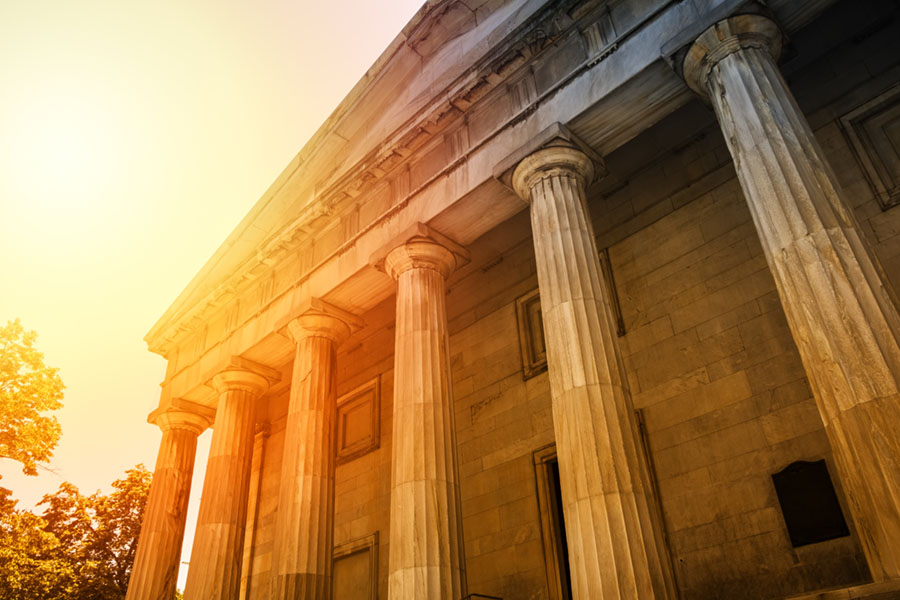
American Central Bank History Exposed
American Central Bank History Reveals Much About Today and Helps to Explain How Our Crooked Economic System is Designed to Keep People Enslaved to Endless Debt.
It is always important to view important global matters through the wide lens of history.
When current economic news events are viewed through the lens of American central bank history, past causes of modern events start to become much more evident.
When Treasury Secretary Alexander Hamilton, through political maneuvering, established the First Bank of the United States in 1791, the seeds were sown for the modern Federal Reserve banking system.
What is the danger of such a central bank? How has this danger been proven time and time again throughout America’s history?
Texts such as Human Action by Ludwig von Mises, Man, Economy and State by Murray N. Rothbard, and The Road to Serfdom by Friedrich Hayek have proven beyond any shadow of a doubt that government-run fiat currency causes inflation, often to catastrophic levels.
This inflation, left unchecked (as is always the case in the government) ultimately leads to hyperinflation and a debasement of the currency Other countries’ histories of central banks have shown this to be true (as in the current example with Zimbabwe’s hyperinflation).
At the current rate at which the Federal Reserve Bank is injecting money into the economy, this is the tumultuous trajectory of the American dollar, as well.
Unless a firm grasp of American central bank history is achieved, this pattern of inflation and currency debasement will continue ad infinitum.
Hamilton and the First Central Bank
Most of the founders of America strongly opposed the concept of a centralized bank, citing the Bank of England as one of the reasons for splitting with England.
Nonetheless, American central bank history begins with one of the founding fathers.
Alexander Hamilton was a constant and passionate advocate of a centralized banking system.
When the time was ripe, Hamilton made a deal with political rivals to establish the First Bank of the United States.
Based in Philadelphia, Pennsylvania, the First Bank of the United States, though a far cry from the modern gargantuan Federal Reserve Bank, planted the seeds for fiat currency, massive debts, and the exponential growth of the 21st century state.
As the First Bank of the United States was formed in 1791, the honeymoon period of free banking in America ended before it had even begun.
By setting a precedent of a bank that presides over all other banks, the die had been cast.
The Civil War and Central Banking
Even a cursory examination of history cannot ignore the role central banks played in allowing the Civil War, a humanitarian crime which sparked massive growth in the state, to occur.
Without a central bank, which lent money to the Union at rates and quantities which the free market would not have offered, the Civil War could not have been fought in the first place.
The ultimate consequence of passing the National Banking Act of 1863 was that, because the market was distorted by artificial government factors, bank runs occurred, climaxing in the Panic of 1907.
Every action the government takes has consequences, either short term or long term.
By delaying the inevitable consequences through borrowing from central bank to fund spending growth, the consequences end up being far more catastrophic.
The Federal Reserve and Modern Times
The ultimate climax of a central bank system, heartbreaking in its Shakespearean tragedy, is the establishment of a fiat currency.
The 20th century was the vessel through which American central bank history played this final act.
When a bank is given the ability to lend any amounts of money with almost no consequences, it will not restrain itself.
Through its close ties with the Executive Branch, the Federal Reserve, while technically called a private bank, is no different than any other government entity.
When the news that 0.8% inflation (9.6% adjusted for a year) had hit the American economy, this fact was the inevitable consequence of the banking system that injects billions of dollars into the economy to stimulate it.
What began with the First Bank of the United States has finally climaxed in a national bank system that rivals that of past nations.
No economy is immune to the laws of economics, and when a government declares the right to print as much money as it wants, it will debase the currency beyond repair.
American central bank history will end exactly as every other story of central banks has ended – economic turmoil.

 My First Amazing Ayahuasca Experience
My First Amazing Ayahuasca Experience  Pine Needle Tea
Pine Needle Tea  The REAL Controllers of Humanity: The Papal Bloodlines
The REAL Controllers of Humanity: The Papal Bloodlines  Is it Global Warming or Cooling?
Is it Global Warming or Cooling?  Gun Rights and Obama Examined
Gun Rights and Obama Examined